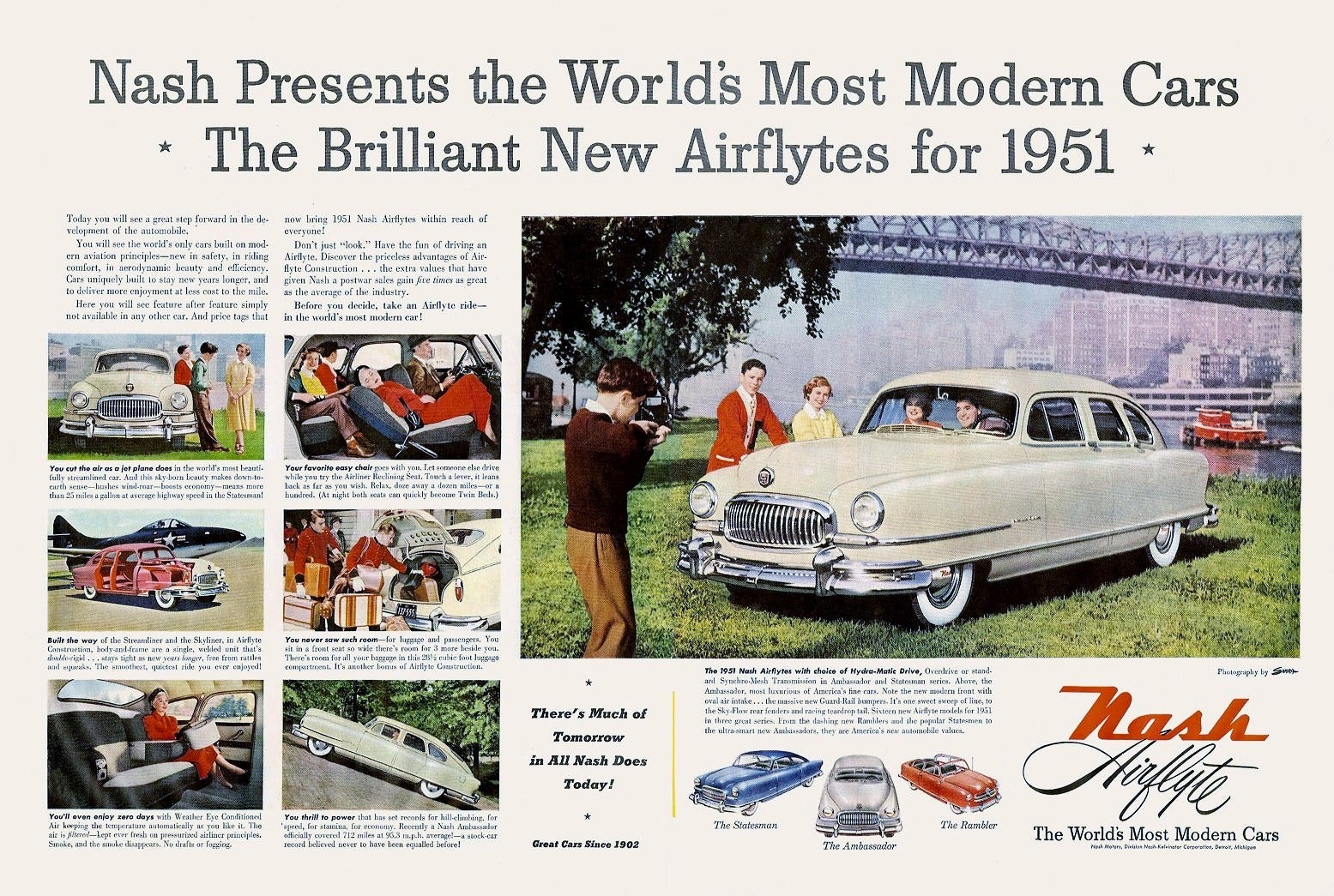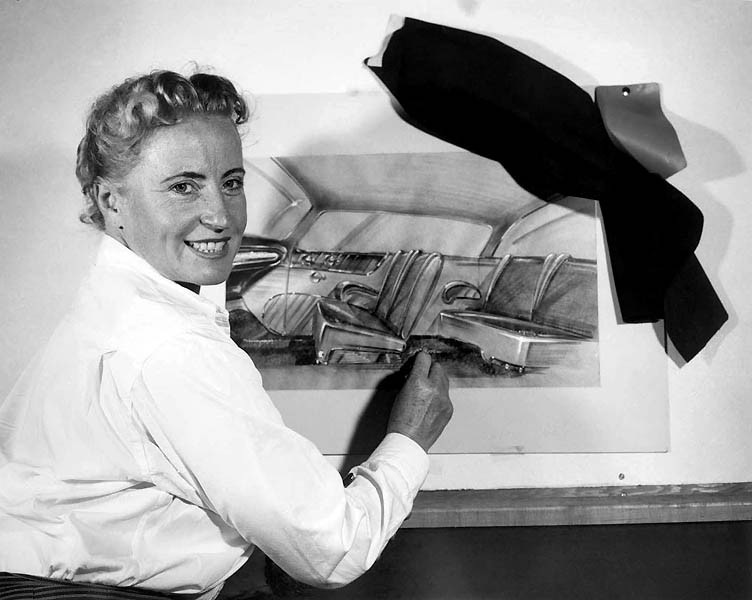Helene Rother was a terrible driver, always in a rush. She was routinely pulled over for speeding and got in multiple in fender benders. So when she went to work for Nash Motors in 1947, the irony was too perfect. Soon she bought a Nash car to match her new role — and promptly totaled it.
But Rother was also an automotive force of a different kind. As the first woman in American car design, she paired natural creativity with the hustle that would define her career. Eventually she would earn three times the average male wage and build a personal brand synonymous with luxury.
She came a long way from her first days in the U.S., spent as a refugee with a nine-year-old daughter to feed.
As a young woman in Paris, Rother designed fine jewelry, watches, and hat pins. Then the war broke out and no one could afford such extravagances. When the Nazis occupied France, Rother and her young daughter, Ina, boarded the first ship to anywhere. “At that point, you didn’t care where you were going as long as you were leaving,” recalled Ina. Turns out, they were headed to Casablanca.

For four months, mother and daughter lived in a North African refugee camp as their paperwork was processed. Then, in 1941, they sailed for New York.
Rother immediately sought work and found it as an illustrator at Marvel Comics. There, she drew the character Jimmy Jupiter, who sometimes appeared in issues alongside The Human Torch and Namor the Sub-Mariner.
Soon she spotted a job ad in The New York Times: General Motors needed a new designer. Rother traveled to Detroit for the interview and got the job overseeing upholstery, lighting, and interior hardware — though she had zero industrial design experience. She had a “selling personality,” said Ina of her mother. “She was not a shrinking violet,” and acted more like Humphrey Bogart than Ingrid Bergman, according to her daughter. Rother was also a true beauty, her blonde locks curled into face-framing coils above dark suits.
The mother and daughter moved into a small apartment in Detroit. Rother grew in her role at GM over four years. She earned $600 per month, a handsome sum for the times, and was given remarkable autonomy. However, GM downplayed her accomplishments because a woman’s success in a traditionally male field was considered radical, according to The Detroit News.
In 1947, Rother moved on to Nash Motors, where she worked as a consultant. There, she sketched interior concepts and designed key features like door handles, speedometers, and medallions. The first vehicle she worked on was the 1948 Nash 600, which boasted Ambassador Custom trim in choices like Sherwood Green, Tampico Brown, or Neapolitan Blue.
Suddenly Nash interiors reinvented the brand as stylish, modern, and aspirational. Rother said, “Everywhere I travel in America I hear women saying…’Give us a car we can get into and out of without looking funny…seats we can lean back in…seat covers we can wash and clean. Pretty colors.’” She delivered chic comfort in a design era awash with functionality. “Modern design is the last fortress of man. It is too masculine, too cold, without the small feminine touches.”

Nash’s new interiors were dubbed the best in American automotive luxury. Rother’s aesthetic would earn her an invitation to speak at the 1951 Society of Automotive Engineers conference. She was the first woman to do so. One reporter admitted, “Her 500 listeners came to laugh, but stayed to cheer her logical conclusions.” In 1953, she helped Nash win the Jackson Medal for outstanding design. Her name was featured prominently in automotive advertisements as “Madame Helene Rother of Paris.” She was a brand.
During this period, Rother also consulted for companies like B.F. Goodrich, Magnavox, and Goodyear (for which she designed sneakers). Ina remembered her mother as constantly busy, but also excited. “If you think it’s hard to be the first woman designer, think how hard it is to have a child to support and make a decent living doing that kind of work,” she said. “Stress probably puts some people out, but not her.”
After Nash merged with Hudson to create American Motors, Rother left the brand. In 1955 she joined Miller-Meteor, a manufacturer of ambulances and hearses. Later, she designed stained glass windows for churches throughout the country, a remarkable career move she would continue the rest of her life.
Rother died in 1999, at the age of 91. It’s unclear how many speeding tickets she ended up with over her lifetime.

For Sponsored Ads and Collaborations:
Contact:
Harsha Sanil : hsanil@autonebula.com
Executive Outreach and Communications, Editor & Digital Marketing Expert
For the latest auto news and reviews, follow AutoNebula on Twitter and Facebook
Autonebula is a connected transportation vehicle accelerator and investment fund that nurtures startups in this realm by mentoring them across business, technology & marketing – Check out Softlanding with Autonebula

